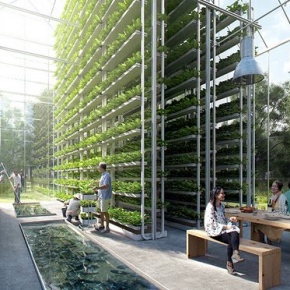
How the building industry is helping to reduce its environmental impact
Over the past few years, there’s been many changes and restrictions placed upon UK businesses to lower their environmental impact. As global warming becomes a major threat, it’s become more important than ever before to reduce our carbon footprint.
Even the building industry has started to implement changes to ensure new houses and buildings are constructed in an environmentally friendly way. So, will we start to see even more eco-friendly buildings constructed in the not too distant future?
Could the UK follow the USA’s lead?
Just last year, the Guardian published an interesting article on the eco-friendly communes growing in popularity in the US; questioning whether these communes could change the future of housing across the world.
The idea behind the communes was to reduce ecological impact, encouraging self-sufficiency and preparing people for possible future disasters. Everything about their design has been done in an eco-friendly manner, and other countries have already adopted the same idea such as Amsterdam. So, will the UK follow suit? It will certainly be interesting to find out!
What is being done right now?
The eco-friendly communes being constructed around the globe are exciting, but we’ll likely have to wait a while for the UK to follow suit. So, what environmentally friendly changes have been implemented in the UK buildings industry right now?
Well, take the housing market for example. Not only has there been a rise in the number of eco-friendly construction companies available, but there’s also been a focus on using environmentally friendly materials.
Homes and buildings are being constructed with better insulation. Take the Thermafleece insulation from Burton Roofing for example. Made from completely recycled materials, they have been constructed using fifteen years’ worth of research and development. They offer fantastic insulation to reduce energy waste and even during their construction they’ve had a low environmental impact.
In 2006, the government made revisions to the Building Regulations 2000, to improve energy efficiency. The measures it introduced were estimated to save around 1 million tonnes of carbon each year by 2010.
Buildings constructed these days need to ensure the heating, lighting, hot water and cooling systems all meet energy efficiency measures. Windows, vents, doors and roof light fittings also need to be draught proof, while the actual materials for construction will need to be locally sourced and even reclaimed where possible.
Passive houses could be the future
Along with eco-friendly communes, passive houses could be the design of the future. There’s already 30,000 of them situated around the globe, including some in the UK. They run on very little energy and the very first one to be built in the UK was designed by architect Justin Bere. He designed the very first certified passive house in Camden, England.
Overall, the buildings industry has changed dramatically in recent years, with eco-friendly designs becoming extremely important. It’s likely we’ll start to see many more eco-friendly buildings being introduced into the UK in the not too distant future as the battle to fight global warming continues.
Latest news

28th March 2025
FLIR Si1-LD Acoustic Imaging Camera for Compressed Air Leak Detection
FLIR, a Teledyne Technologies company, introduces the Si1-LD, an industrial acoustic imaging camera that brings faster and more accurate compressed air leak detection to those operating on a modest condition monitoring budget.
Posted in Acoustics, Noise & Vibration Control, Articles, Building Industry News, Building Products & Structures, Building Services, Facility Management & Building Services, Information Technology, Innovations & New Products, Retrofit & Renovation, Sustainability & Energy Efficiency, Thermal Imaging and Monitors
28th March 2025
LIFTEX 2025 Seminar programme announced
Registration has opened for LIFTEX 2025. Now in its 37th year, LIFTEX 2025 is the UK’s only dedicated exhibition for the lift, escalator and access industry and takes place only once every three years.
Posted in Access Control & Door Entry Systems, Accessibility, Articles, Building Industry Events, Building Industry News, Building Products & Structures, Building Regulations & Accreditations, Building Services, Exhibitions and Conferences, Facility Management & Building Services, Health & Safety, Retrofit & Renovation, Security and Fire Protection, Seminars
28th March 2025
MCRMA welcomes ArcelorMittal UK to membership
A UK division of the global steelmaking business ArcelorMittal has become the latest new member of the MCRMA, the industry association representing the metal building envelope sector.
Posted in Articles, Building Associations & Institutes, Building Industry News, Building Products & Structures, Building Systems, Cladding, Facades, Posts, Restoration & Refurbishment, Retrofit & Renovation, Roofs, Steel and Structural Frames, Walls
28th March 2025
Abloy: Managing access and security in Telecoms infrastructure
Telecommunications infrastructure underpins much of the world’s economy and critical services, but the industry is vulnerable to physical threats, from sabotage to theft and accidental damage, as Abloy UK explains here…
Posted in Access Control & Door Entry Systems, Architectural Ironmongery, Articles, Building Industry News, Building Products & Structures, Building Regulations & Accreditations, Building Services, Doors, Facility Management & Building Services, Information Technology, Innovations & New Products, Posts, Publications, Research & Materials Testing, Retrofit & Renovation, Security and Fire Protection
 Sign up:
Sign up: